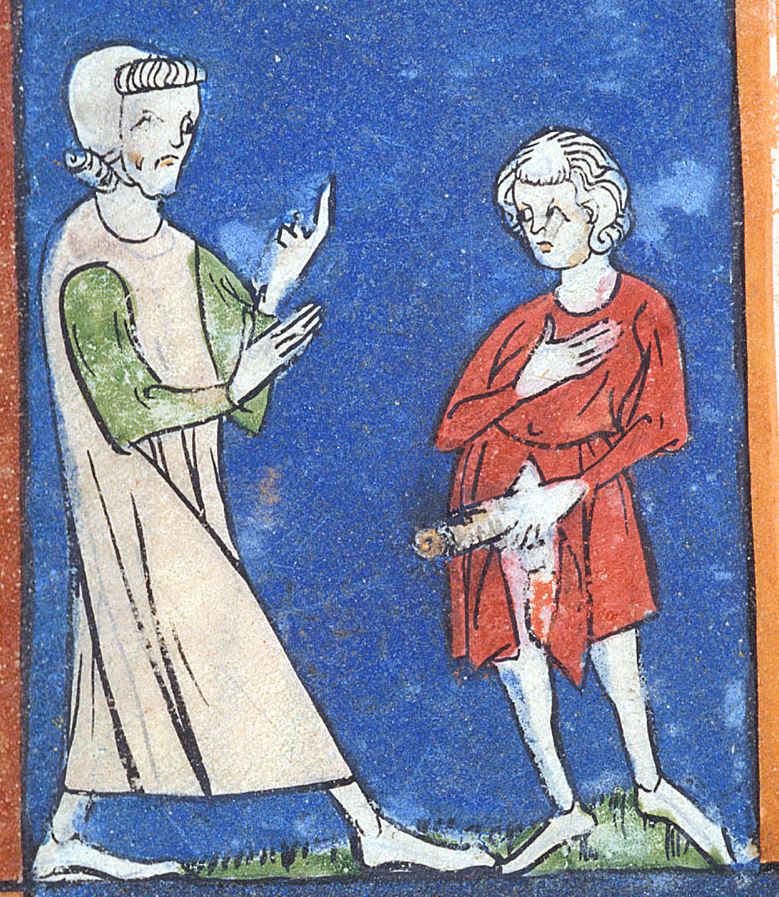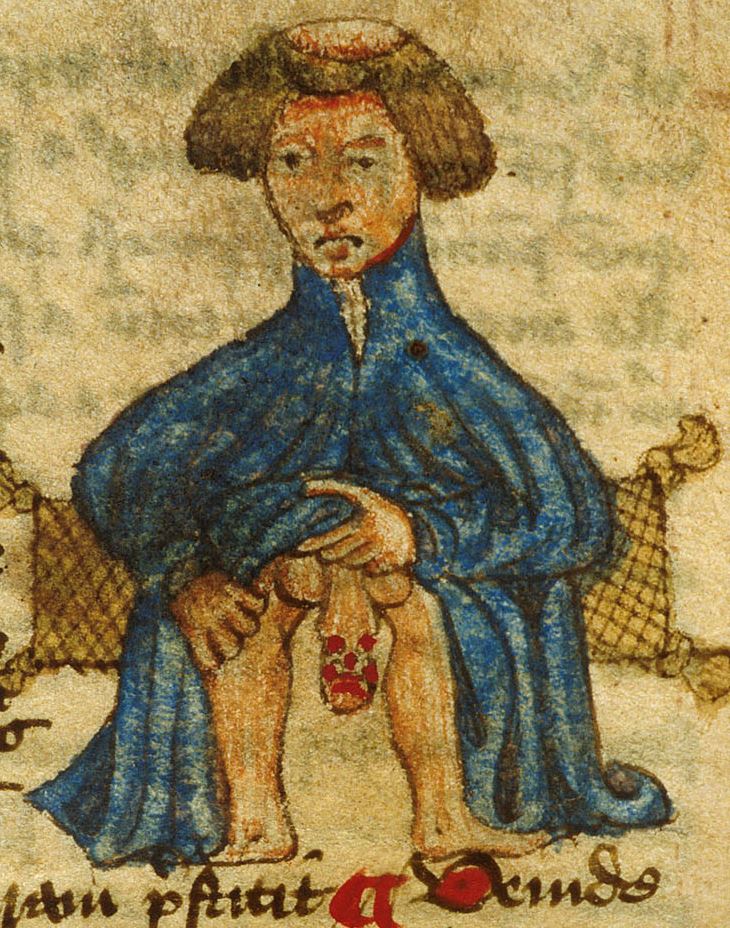In the mid-1440s, the theologian Thomas Gascoigne wrote an account of the death of John of Gaunt, Duke of Lancaster. Gaunt, the father of Henry IV, had died in his bed nearly half a century earlier, and Gascoigne’s narrative would have attracted little interest — had it not been for his inclusion of some particularly choice details. According to Gascoigne, John of Gaunt ‘died of putrefaction of his genitals and body, caused by the frequenting of women, for he was a great fornicator.’

Sadly for those historians who have used this passage to argue that Gaunt died of venereal disease, the veracity of Gascoigne’s claims is doubtful. His source was ‘a faithful student of theology who knew these things and told them to me,’ and as a staunch Yorkist he had good reason to spread slanderous gossip about the founder of the Lancastrian dynasty. Yet even if we take Gascoigne’s account at face value, it is far from certain that he wanted his readers to think that Gaunt died from a sexually transmitted infection. Since medieval medical theory viewed sex in terms of excretion and humoral balance, it was possible for a man to die from having too much sex — even if all his partners were perfectly healthy.
The ambiguity of the Gaunt case should not, however, be taken as evidence for medieval ignorance about venereal diseases. Much (too much) has been made of the medieval tendency to interpret leprosy as a product of sexual sin, but such interpretations were not solely based on moral judgements. Instead, they were firmly rooted in medical theory. The Prose Salernitan Questions (c.1200), explained how a woman might be left unharmed after having intercourse with a leper, but her next lover would contract the disease. The coldness of the female complexion meant that the leper’s semen would remain in the woman’s uterus, where it would turn to putrid vapour. When the penis of the healthy man came into contact with this vapour, the heat of his body would ensure that it was absorbed through his open pores. Sores would soon appear on his genitals, before spreading around his body.
Concerns about the sexual transmission of disease often focused on prostitutes. Occasionally, local authorities took preventative action: a set of regulations from late medieval Southwark banished women with ‘burning sickness’ (probably gonorrhoea) from the local stews. The effectiveness of such rulings is unknowable, but there are many tales of men who found themselves with undesirable symptoms after a brothel visit. Amongst the many healing miracles attributed to Thomas Becket was the cure of Odo de Beaumont, who became leprous immediately after a visit to a prostitute. Arnaud de Verniolles, a renegade Franciscan friar from Montaillou, was also afflicted by apparent symptoms of leprosy immediately after an encounter with a prostitute. This so frightened him that he vowed never to sleep with a woman again, instead resorting to sodomy with young men.
Less dramatic responses to the problem of venereal disease were provided by the physicians. John of Gaddesden included the following advice in his Rosa Anglica (c.1314):
If you wish to preserve your organ from harm, should you suspect your partner of being corrupted, purify yourself, as soon as you have withdrawn, with cold water in which you have mixed vinegar, or with urine.
If such prophylactic measures failed, then the patient might be forced to use one of the many remedies for swollen, itchy, or pustulent genitals found in medical treatises and recipe collections. The twelfth-century medical compendium Trotula noted that there are men ‘who suffer swelling of the virile member, having there and under the prepuce many holes, and they suffer lesions.’ Such a man should use a poultice to reduce the swelling. Then, ‘we wash the ulcerous or wounded neck of the prepuce with warm water, and sprinkle on it powder of Greek pitch and dry rot of wood or of worms and rose and root of mullein and bilberry.’

Even more brutal are some of the treatments practised by John of Arderne, a fourteenth-century English surgeon. Arderne was best known for his specialism in cases of fistula-in-ano, but he also practised general surgery. In one of his recorded cases,
The man’s yard began to swell after coit, due to the falling of his own sperm, whereof he suffered great grievousness of burning and aching as men do when they are so hurt.
Arderne treated him by cutting away the dead flesh with a razor, then applying quicklime. This seems to have resulted in a cure.
Ultimately, however, even medical sources prove problematic for the historian of venereal disease. Both Trotula and John of Arderne describe symptoms which seem suggestive of an STD, and the latter traces a direct link between sexual intercourse and his patient’s symptoms. But neither author explicitly identifies their remedies as cures for diseases transmitted by sexual contact. Like John of Gaunt, the man with the swollen yard may have been viewed by his contemporaries as a victim not of infection, but of overindulgence.
What is clear is that the history of venereal disease did not begin with syphilis: medieval men and women were plagued by genital conditions long before the Siege of Naples. Furthermore, despite the existence of a strong cultural link between sex and sin, such conditions were not merely viewed in moral terms. Medical practitioners worked hard to understand and treat such conditions, even when it was believed that a patient’s sexual behaviour was to blame for his condition. A pustulent penis might indicate that an individual needed to mend his ways, for the sake of his eternal soul — but in the meantime, a trip to the doctor could make his earthly body a lot more comfortable.
Katherine Harvey is Wellcome Trust Research Fellow at Birkbeck College, University of London, where her research focuses on the pre-Reformation English episcopate. Her first book, Episcopal Appointments in England, c. 1214- c. 1344, was published by Ashgate in 2014, and she has also written several articles on the medieval episcopal body. Her current research project is ‘Medicine and the Bishop in England, c. 1100- c. 1500.’ She tweets from @keharvey2013

NOTCHES: (re)marks on the history of sexuality is licensed under a Creative Commons Attribution-NonCommercial-NoDerivatives 4.0 International License.
Based on a work at www.notchesblog.com.
For permission to publish any NOTCHES post in whole or in part please contact the editors at NotchesBlog@gmail.com





